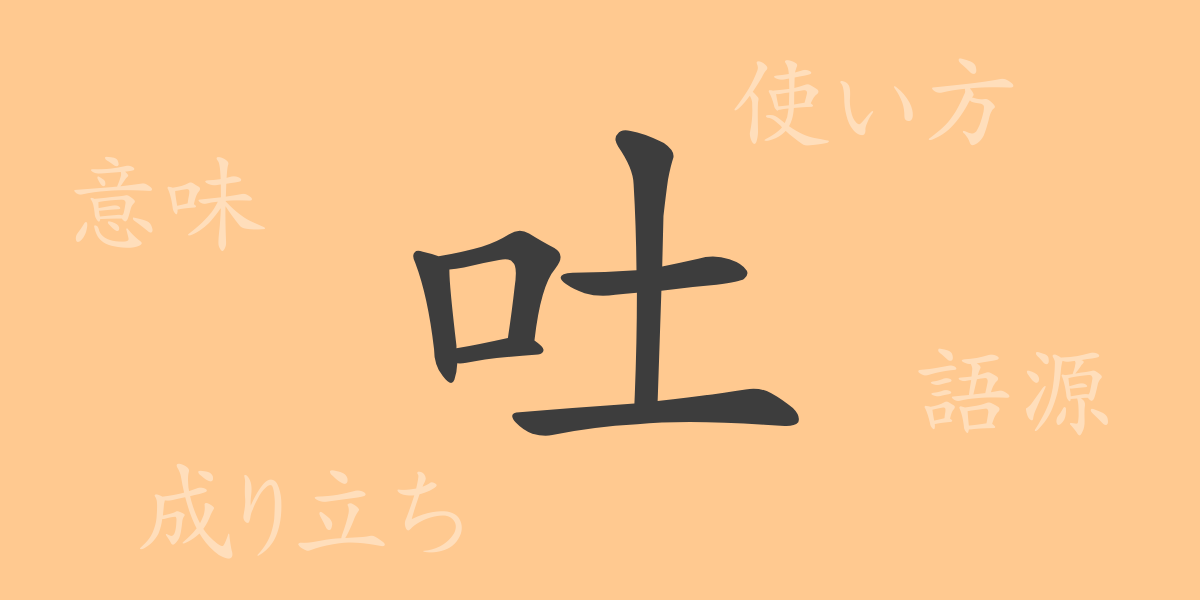The Japanese character ‘吐(ト)’ holds a profound significance, each kanji bearing its unique history and meaning. This article will explore ‘吐’, a common kanji in daily Japanese, delving into its origins, meanings, applications, and the cultural knowledge embedded within. Discover the rich culture and history behind this frequently used character and deepen your understanding of the Japanese language.
Origins of ‘吐(ト)’
The kanji ‘吐’ evolved from ancient characters representing the act of expelling something from the mouth. Originally depicted as an open mouth with an emerging line, it symbolized the action of spitting out breath, words, or food. Over time, ‘吐’ has developed various meanings and uses, playing a significant role in modern Japanese.
Meaning and Usage of ‘吐(ト)’
‘吐’ primarily means ‘to spit out’, ‘to emit’, or ‘to speak’. It is used to describe the physical act of ejecting substances from the body, exhaling breath, or expressing opinions or emotions. This kanji illustrates the extensive expressive capacity of Japanese, from literal physical actions to metaphorical expressions.
Readings, Stroke Count, and Radical of ‘吐(ト)’
Understanding the readings and structure of ‘吐’ is vital for learning Japanese:
- Readings: On’yomi ‘ト’, Kun’yomi ‘は(く)’
- Stroke count: 6
- Radical: 口(くちへん) – Mouth
Phrases, Idioms, and Proverbs Using ‘吐(ト)’
‘吐’ appears in numerous idioms and phrases, each with unique meanings and nuances:
- 吐露(トロ) – To confide one’s deepest thoughts
- 吐息(トソク) – A sigh
- 吐血(トケツ) – Vomiting blood, symbolizing extreme suffering or effort
These expressions enrich Japanese literature and everyday conversation, providing vivid imagery and emotional depth.
Conclusion on ‘吐(ト)’
The kanji ‘吐’ offers a glimpse into the complexity of meanings and uses that extend far beyond its simple form. Understanding how ‘吐’ is used in Japanese not only deepens linguistic knowledge but also enriches appreciation for the cultural nuances of the language. Through this exploration, we hope to enhance recognition of the cultural and expressive power held within the kanji ‘吐’.

























